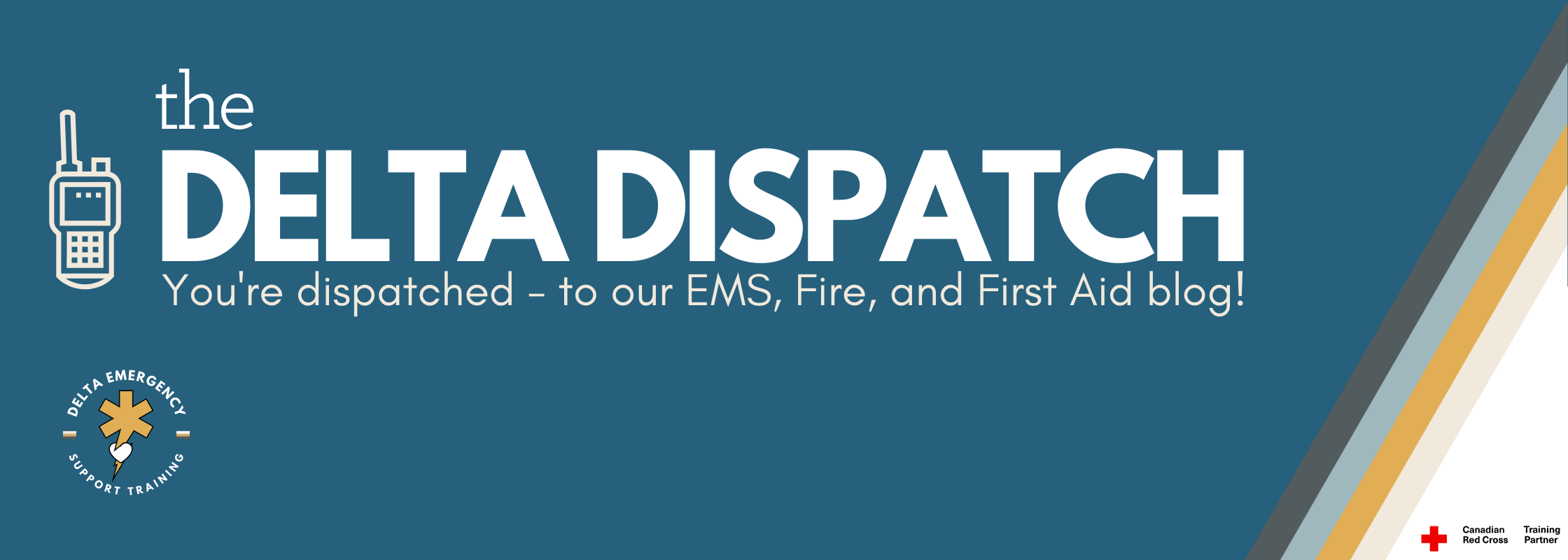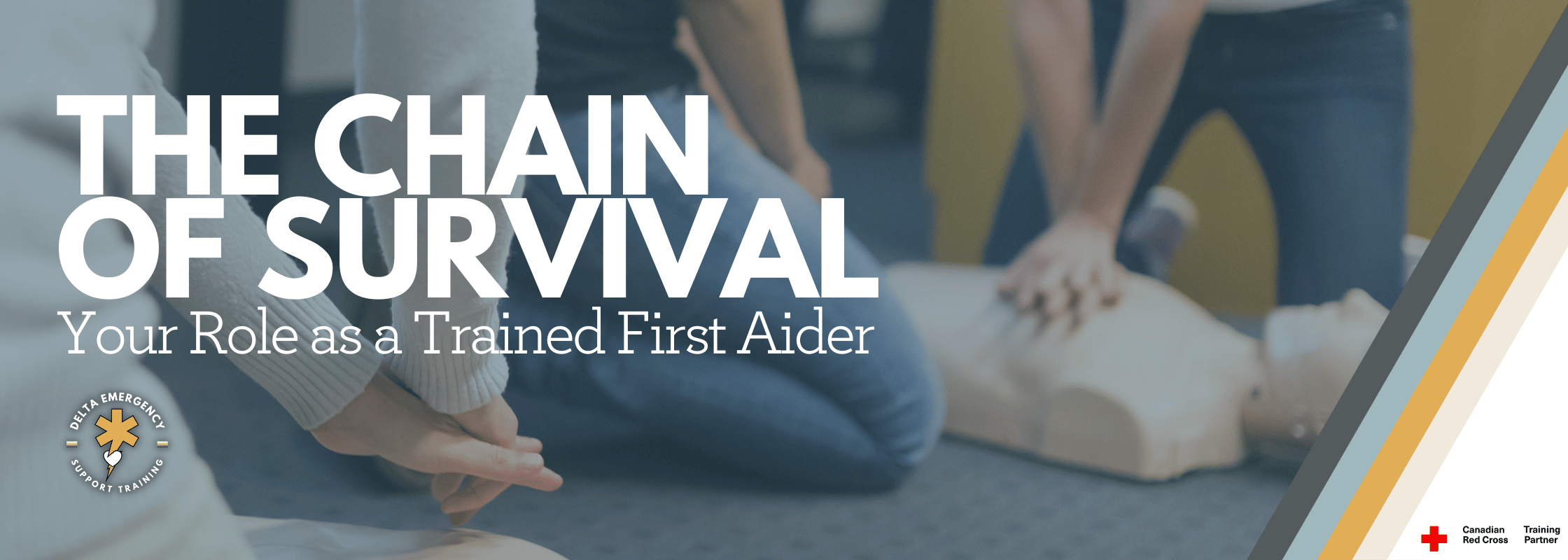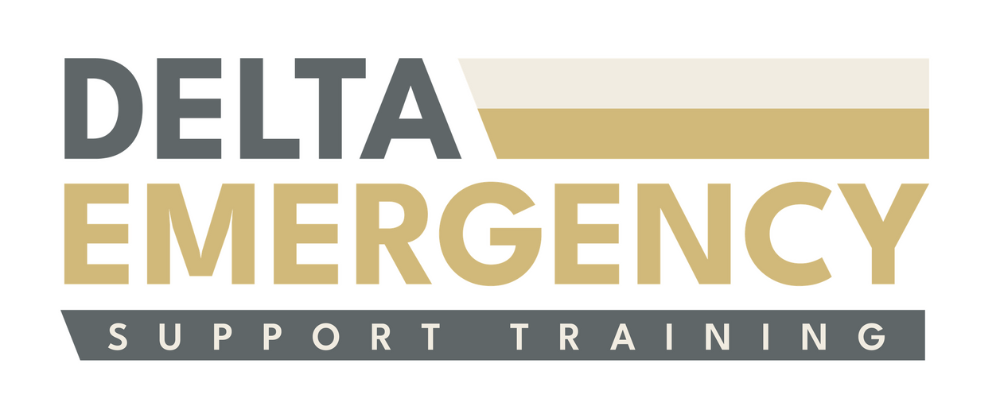The Chain of Survival: Your Role as a Trained First Aider
/When someone collapses, chokes, or stops breathing, every second counts. Whether you're a parent, a coach, a security guard, or someone who’s recently completed your Standard First Aid certification, you are a vital link in what’s known as the Chain of Survival—a model that outlines the critical steps needed to give someone the best chance of survival in a life-threatening emergency.
This blog explores what the Chain of Survival is, how first aiders fit into it, and why quick, confident action truly saves lives.
🔗 What Is the Chain of Survival?
The Chain of Survival is a concept developed by the American Heart Association and supported by the Canadian Red Cross. It identifies five key links in responding to sudden cardiac arrest or other life-threatening emergencies:
Early recognition and activation of EMS (calling 911)
Early CPR with an emphasis on high-quality chest compressions
Rapid defibrillation (AED use)
Advanced resuscitation by paramedics or emergency healthcare professionals
Post-cardiac arrest care at the hospital
🧠 Why the First Three Links Depend on You
Before paramedics arrive, the first three links are in your hands. This is where Standard First Aid and CPR trainingcomes in.
✅ 1. Early Recognition & Calling 911
You are the first person on scene—whether at home, at work, or in a public space. Recognizing when something is wrong (unresponsiveness, abnormal breathing, signs of a stroke or heart attack) and calling 911 starts the entire chain. Don’t wait. Early recognition can prevent the situation from getting worse.
✅ 2. Early CPR
If the person is not breathing or has no pulse, you need to start CPR immediately. High-quality chest compressions maintain blood flow to the brain and organs, buying time until help arrives. Studies show that bystander CPR can double or triple a person's chances of survival.
✅ 3. Early Defibrillation
An AED (automated external defibrillator) can shock the heart back into a normal rhythm. These are often available in schools, gyms, offices, and malls. Your Standard First Aid training gives you the confidence to use one correctly—and without hesitation.
🚑 Where EMS and Hospitals Take Over
Once paramedics arrive, they begin advanced care: administering medications, airway management, and transport to the hospital. But without your initial response—those first few minutes—their efforts may come too late. Survival rates drop 7–10% for every minute defibrillation is delayed. That’s why your actions matter so much.
👣 Your Role as a Trained First Aider
By taking a Red Cross Standard First Aid course, you’ve become more than just a witness to emergencies—you’ve become someone who can act. You’ve learned to:
Assess the scene and ensure safety
Check for responsiveness and breathing
Call for help and provide clear information to dispatch
Start CPR and use an AED
Support someone through shock, bleeding, or trauma
Recognize and manage common medical emergencies
You’re not a bystander. You are the beginning of the Chain of Survival.
🛠️ Want to Be Even More Prepared?
Whether you’ve taken first aid before or are due for a recertification, refreshing your skills ensures you stay sharp and confident. At Delta Emergency Support Training in Calgary, Alberta, our first aid programs are taught by experienced paramedics and firefighters who know what it’s like to respond in real life.




